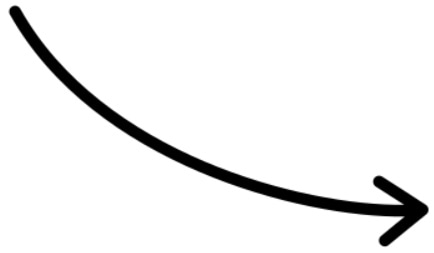A weight loss journey can sometimes be a challenging experience full of day-to-day ups and downs that make it difficult to stick with. Choosing the right meal plan and finding time to add an exercise routine into a busy daily life are hard work even in the best of circumstances. It’s also a unique individual effort—everyone’s body is different and therefore they will lose weight at different rates based on different approaches to weight loss. Yet even when dieters do put all the right pieces in place and begin to lose weight, most inevitably run into a common problem: the weight loss plateau. For many people, this seeming dead end makes them want to throw in the towel, but there are some ways to break through and get back on track.
When a weight loss program is working, you’ll be able to tell either by your waistline decreasing or by the number on the scale going down. In general, doctors recommend 1-2 pounds per week as a healthy and safe rate of weight loss. Sometimes, though, usually after a month or more of progress, the number on the scale stops going down. It’s especially frustrating because it usually seems like nothing has changed about your diet or any exercise you’ve added to your schedule. For seemingly no reason at all, you’ve stopped losing weight. This is a weight loss plateau.
Understanding weight loss starts from understanding weight gain. After we eat food, it is broken down by the digestive system into glucose, fatty acids, and many other components that can be used by the body. The pancreas then releases insulin to allow cells to absorb and use glucose and signals the liver to store any extra as glycogen for later use. Once the glycogen stores are “full,” excess glucose and fatty acids get converted and stored as fat deposits. Over time, the buildup of fat deposits leads to excess body weight.
In order to lose the weight that has been gained, a calorie deficit is required where the body uses more energy than is being consumed. This forces the body to turn first to glycogen stores because they are the easiest to process and turn into energy. The chemical reaction involved in burning glycogen results in a release of water that is removed from the bloodstream by the kidneys and then eliminated as urine. This loss of water weight soon after starting the diet is the main reason people see early results when they start eating fewer calories.
After the loss of initial water weight, some people experience their first weight loss stall as they continue to have a calorie deficit and fat deposits begin being used for the body’s energy needs. While fat burning is desirable and the ultimate goal, eventually some muscle is lost along with fat. Muscle mass is of course a part of body weight, but it is also a key driver of metabolism and a factor in how many calories are required to keep the body functioning normally.
The combination of fat loss and muscle loss changes the basal metabolic rate, which is the number of calories needed to function with the body at rest. This is usually where people experience another weight loss plateau; even though a person’s low-calorie diet may not have changed, the lower limit needed to trigger fat burning has gone lower. This can be frustrating because it feels like you’ve done everything right and yet the weight stops coming off.
If you were losing weight and stopped losing weight, the fundamental explanation is that the equation of calories in vs calories out changed from a calorie deficit to a calorie surplus. Getting back to a pattern of losing weight will require some adjustments in some aspect of your weight loss plan. Below are some tips and things to look for in order to get past your weight loss plateau:
Hitting a weight loss plateau can be incredibly frustrating for anyone, and it may even seem totally inexplicable. But there’s always a reason why you stopped losing weight, and there’s always a way to get back into it. For some people it may mean reassessing the overall weight loss program and making adjustments. For others it may mean returning to the diligence and focus they had at the beginning. The bottom line: a weight loss plateau is only temporary if you stick with your plan.
The truth is that the traditional methods of dieting and exercise to lose weight tend not to work in the long run for most people. A weight loss plateau is just one reason why someone can get fed up with the whole process and just stop trying. If this is you, you’re not alone, and that’s why True You Weight Loss offers a new path for those who have tried again and again without success to meet their weight loss goals. Through state-of-the-art endobariatric procedures like ESG, you’ll be set up to succeed in a way that dieting just can’t match. If you’d like to learn about this new approach to weight loss, please contact us today to request a consultation. Freedom is waiting!

Dr. Christopher McGowan, MD, a leader in endobariatrics, specializes in non-surgical obesity treatments and is triple-board-certified in Internal Medicine, Gastroenterology, and Obesity Medicine. Renowned for pioneering endoscopic sleeve gastroplasty (ESG) with over 2,000 procedures, his global influence and research contributions define him as a top expert.



